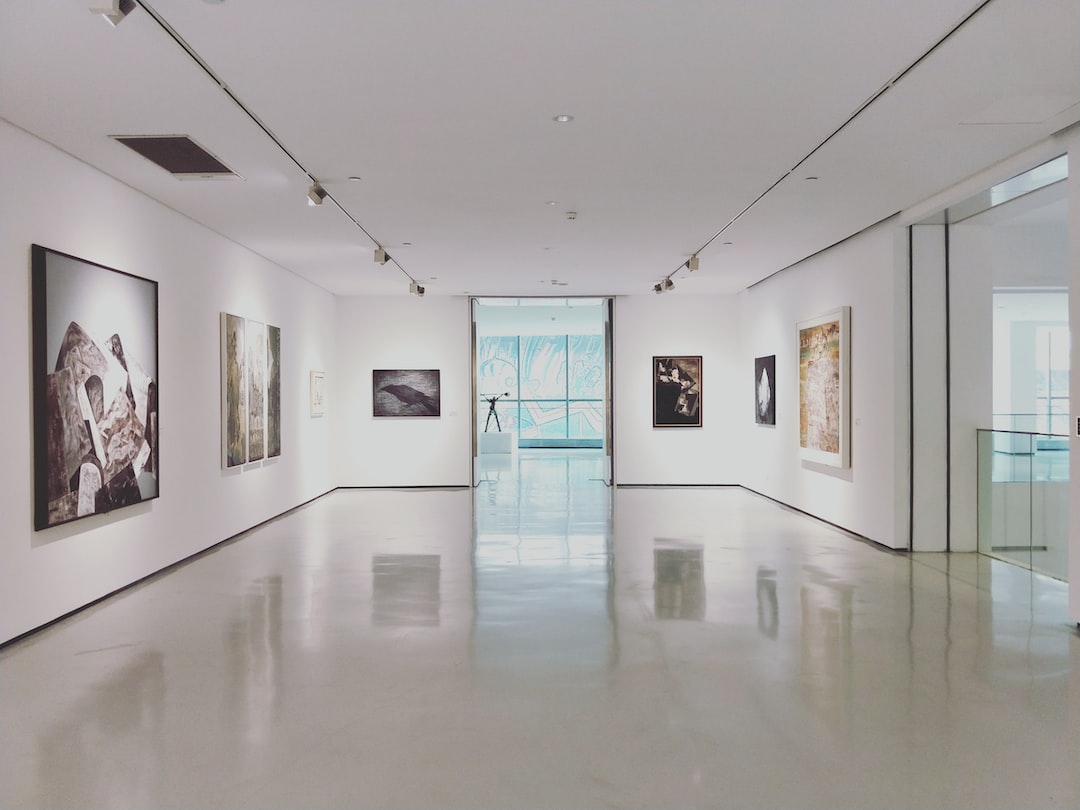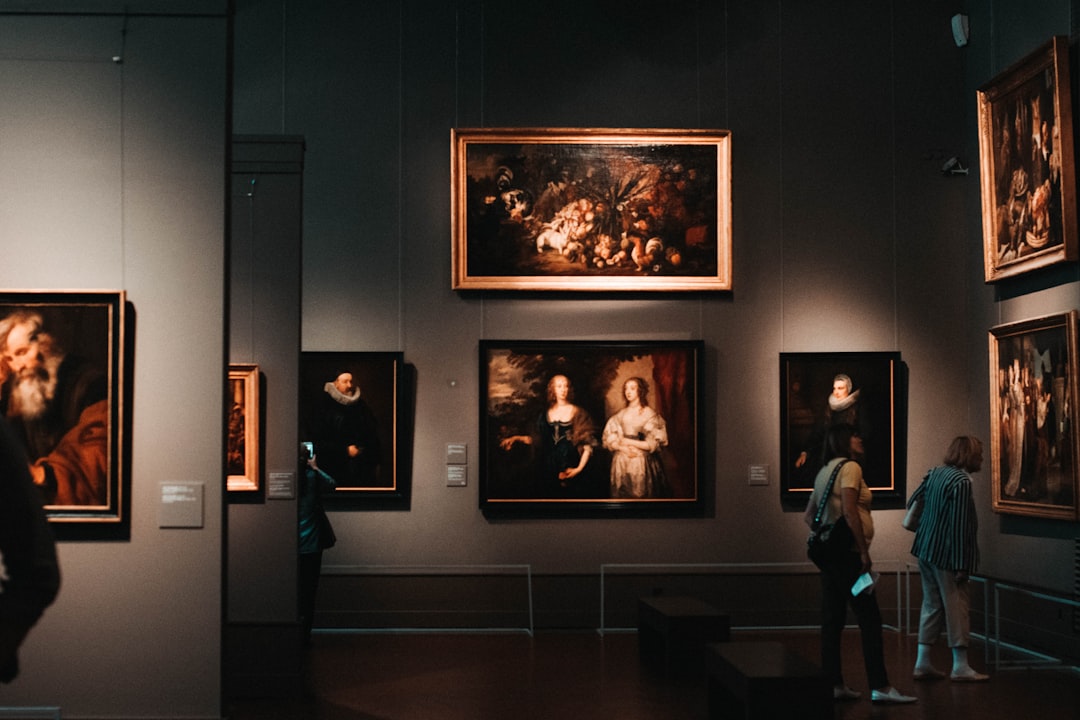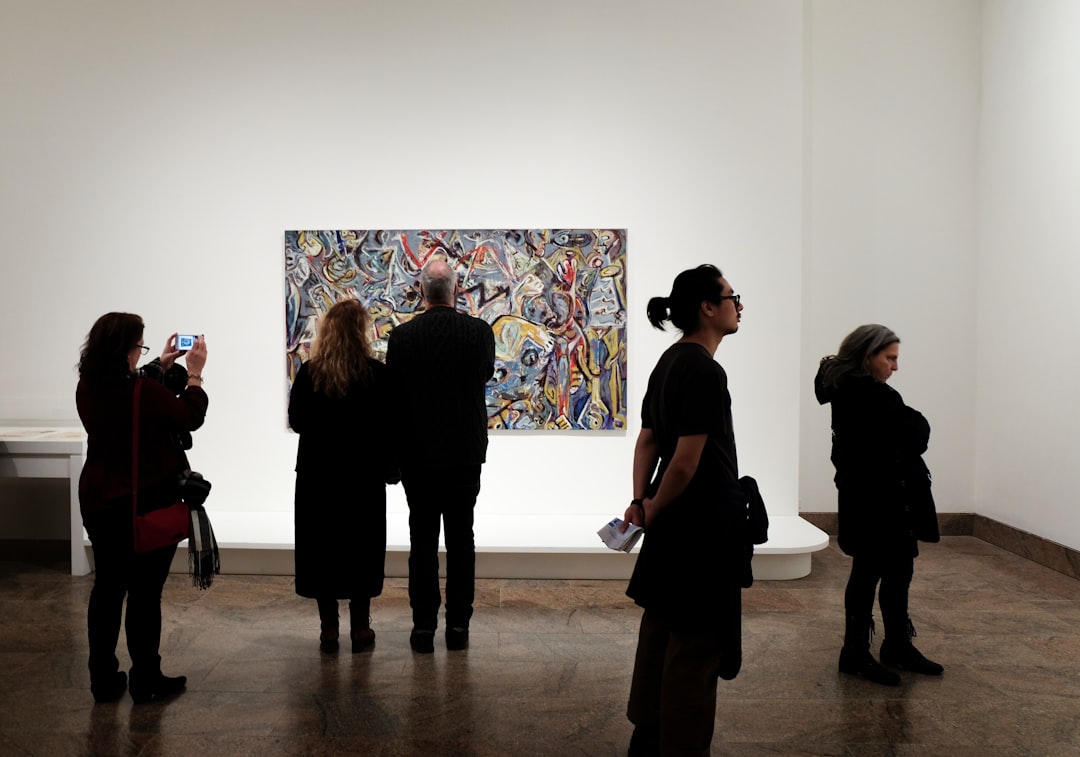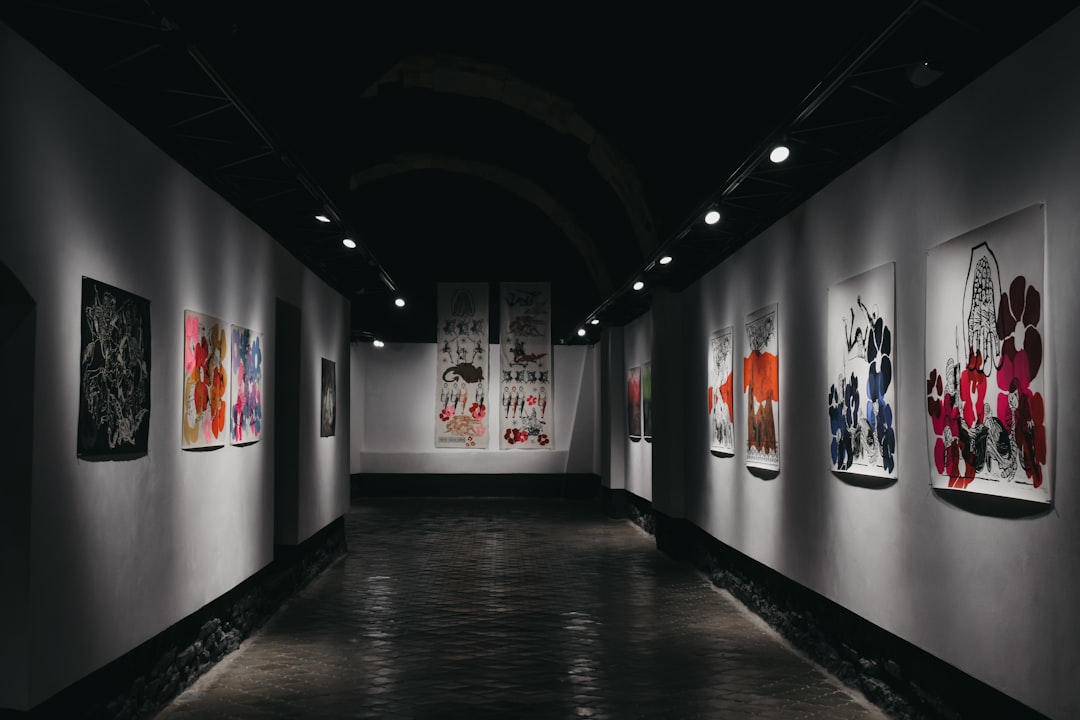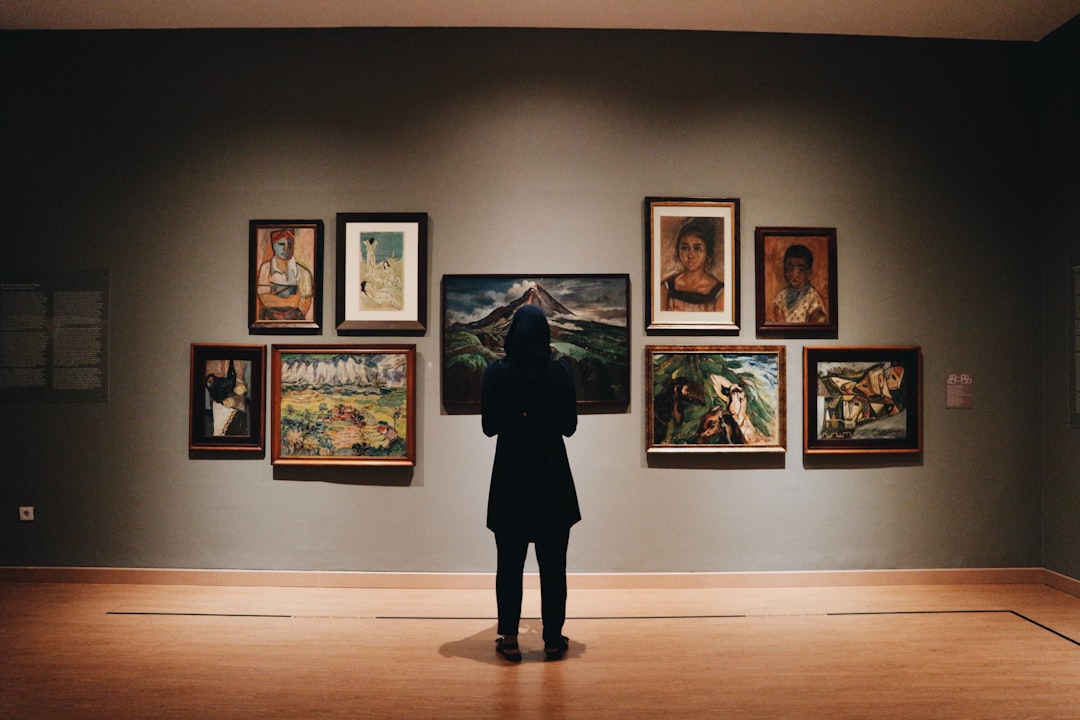Are you ready for a revolutionary change in the art world? Prepare to be blown away by the intersection of two seemingly unrelated worlds – art and crypto. The marriage of these two industries is not only exciting but also has the potential to disrupt traditional art market practices.
The art world is known for its exclusivity and high prices, but with the advent of blockchain technology, the art market is becoming more accessible than ever before. Blockchain technology allows for digital authenticity verification, fractional ownership, and borderless transactions. These innovative features are changing the way art is bought, sold, and collected.
Crypto, on the other hand, is a decentralized digital currency that operates on a peer-to-peer network. It has the potential to revolutionize the global financial system by eliminating middlemen and reducing fees. This technology has already disrupted industries like banking, real estate, and e-commerce. Now, it’s time for the art world to get a taste of this disruptive technology.
The intersection of the art world and crypto has led to a rise in new opportunities for artists, collectors, and investors. With the introduction of non-fungible tokens (NFTs), the art world has seen a surge in the creation and selling of digital art. The use of NFTs has opened up new revenue streams for artists and has allowed collectors to own unique digital assets.
In this series of blog posts, we will explore how the art world meets crypto. We will dive deep into the technology behind blockchain and how it can be used to verify the authenticity of art. We will also discuss how fractional ownership is democratizing the art market and how NFTs are changing the way we collect art. Moreover, we will explore how crowdfunding through cryptocurrencies can fund artistic projects and support emerging artists.
Get ready to be inspired by the possibilities that lie at the intersection of art and crypto. Join us on this exciting journey as we explore the various ways in which these two industries can work together to create a more accessible and inclusive art world.
Digital Authenticity: Verifying Art through Blockchain
As technology continues to advance, so too does the world of art. While art has traditionally been a physical commodity, the rise of digital art has presented new challenges in terms of authentication and ownership. Enter blockchain technology, which has the potential to revolutionize the art world by providing a secure and transparent way to verify the authenticity of digital art.
At its core, blockchain is a decentralized ledger that records transactions in a secure and transparent manner. Each block in the chain contains a unique digital signature, making it virtually impossible to tamper with or alter past transactions. This level of security and transparency has made blockchain an attractive option for artists and collectors alike, as it allows for the creation of a permanent and tamper-proof record of ownership.
One of the key benefits of blockchain technology is its ability to eliminate the need for intermediaries in the art market. In a traditional art transaction, buyers and sellers often rely on middlemen such as dealers, auction houses, and galleries to authenticate and verify the artwork. These intermediaries can add significant costs to both the buyer and seller, as they often charge high fees for their services. With blockchain technology, however, the need for intermediaries is greatly reduced, as the authenticity of the artwork can be verified through the blockchain itself.
In addition to providing a secure and transparent way to verify the authenticity of digital art, blockchain technology also has the potential to democratize the art market. Through the use of smart contracts, blockchain allows for fractional ownership of artwork, which means that multiple investors can own a share of a single piece of art. This can be particularly beneficial for emerging artists who may not have the resources to fund their own projects, as it allows them to raise funds through a crowd-sale of their artwork.
Overall, the use of blockchain technology in the art world holds great promise for artists, collectors, and investors alike. By providing a secure and transparent way to verify the authenticity of digital art, blockchain has the potential to revolutionize the way we create, buy, and sell art. As we continue to explore the possibilities of this exciting new technology, we can look forward to a more open, democratic, and vibrant art market.
With blockchain technology, however, the need for intermediaries is greatly reduced, as the authenticity of the artwork can be verified through the blockchain itself.
Fractional Ownership: Democratizing the Art Market
The art world has typically been an exclusive club, with only the wealthy elite able to afford the stunning pieces that adorn their walls. But with the advent of blockchain technology and cryptocurrencies, there has been a shift towards democratizing the art market. One way this is being achieved is through fractional ownership.
Fractional ownership essentially means dividing the ownership of a piece of art into smaller, more affordable shares. This allows investors who may not have the funds to purchase an entire artwork to invest in a portion of it. These shares can then be bought and sold through blockchain technology, making the process transparent and secure.
This new approach to ownership has opened up the art world to a wider audience, allowing more people to invest in and enjoy art. It also provides a new opportunity for artists to sell their work and gain a larger following.
But fractional ownership isn’t just beneficial for investors and artists – it also benefits the art market as a whole. By increasing the number of people investing in art, the market becomes more liquid and stable. This means that artists can potentially receive higher prices for their work, and investors can have more confidence in their investments.
Furthermore, fractional ownership can lead to increased diversity in art collections. Instead of a single wealthy collector owning a piece of art, it can now be owned by a group of individuals with various backgrounds and tastes. This can lead to a more varied and inclusive art world.
Overall, fractional ownership is a promising development for the art world. It allows more people to access and invest in art, while also potentially benefiting artists and the market as a whole. As the art world continues to evolve with the help of blockchain technology and cryptocurrencies, it will be fascinating to see how fractional ownership further democratizes this historically exclusive industry.
One way this is being achieved is through fractional ownership.
Crypto Collectibles: The Rise of NFTs in the Art World
Have you heard of NFTs? They are the latest buzz in the art world, and they are shaking things up in a big way. NFTs stand for Non-Fungible Tokens, and they are digital assets that represent ownership of unique items, such as art pieces, music tracks, and even tweets. They are created using blockchain technology, which ensures their authenticity, scarcity, and transferability.
NFTs are not a new invention, but they have gained mainstream attention recently due to their record-breaking sales. Some of the most notable examples include Beeple’s “Everydays: The First 5000 Days,” which sold for $69 million at a Christie’s auction, and Jack Dorsey’s first tweet, which sold for $2.9 million on a platform called Valuables.
But why are people paying such exorbitant prices for digital assets that can be easily replicated and shared? The answer lies in the concept of ownership and exclusivity. NFTs allow artists and creators to monetize their work directly to their fans, without the need for intermediaries such as galleries or auction houses. They also offer a way for collectors to own and showcase unique pieces of art that no one else can have.
The rise of NFTs has sparked a new wave of creativity and experimentation in the art world. Artists are exploring new forms of expression that leverage the benefits of blockchain technology, such as verifiability, transparency, and immutability. They are also collaborating with developers and designers to create interactive and multi-sensory experiences that blur the lines between the physical and digital realms.
The potential applications of NFTs in the art world are vast and exciting. They can enable new models of patronage and support, where fans can invest in their favorite artists and share in their success. They can also facilitate new forms of curation and exhibition, where artworks can be discovered and appreciated in new contexts and settings.
Of course, like any new technology, NFTs are not without their challenges and criticisms. Some people argue that they contribute to the commodification of art and the perpetuation of elitism and inequality. Others question their environmental impact, as the process of creating and trading NFTs requires a significant amount of energy and resources.
Regardless of where you stand on the NFT debate, one thing is clear: they are here to stay, and they are changing the way we think about art and ownership. Whether you are an artist, a collector, or simply a curious observer, it is worth keeping an eye on this emerging trend and seeing where it takes us next.
They are created using blockchain technology, which ensures their authenticity, scarcity, and transferability.
Borderless Transactions: Eliminating Middlemen and Reducing Fees
The traditional art market is known for its high fees and reliance on intermediaries. From dealers and auction houses to brokers and art advisors, the process of buying and selling art can be cumbersome, expensive, and limiting. However, the integration of cryptocurrencies and blockchain technology in the art world has the potential to revolutionize the way art transactions are conducted.
One of the most significant benefits of using cryptocurrencies for art transactions is the elimination of intermediaries. With blockchain technology, buyers and sellers can interact directly, without the need for brokers or middlemen. This not only reduces transaction fees but also increases transparency and security.
Moreover, cryptocurrencies enable borderless transactions, allowing artists and collectors to trade across countries and continents without being bound by the restrictions of the traditional banking system. With the use of cryptocurrencies, artists can sell their work to buyers anywhere in the world, and collectors can purchase art from artists in other countries without worrying about currency exchange rates or international transaction fees.
Another advantage of using cryptocurrencies in the art world is the level of privacy it provides. With traditional payment methods, art transactions often require the disclosure of personal information, such as bank account details and credit card numbers. However, with cryptocurrencies, transactions are anonymous and do not require the exchange of sensitive personal information.
Overall, the integration of cryptocurrencies in the art world has the potential to democratize the art market, reduce transaction fees, and provide greater privacy and security. As the art world continues to evolve, it will be exciting to see how the integration of cryptocurrencies and blockchain technology will shape its future.
From dealers and auction houses to brokers and art advisors, the process of buying and selling art can be cumbersome, expensive, and limiting.
Funding Artistic Projects: Crowdfunding through Cryptocurrencies
Cryptocurrencies have opened up new doors for funding artistic projects. Traditional crowdfunding platforms can be restrictive, taking a percentage of the funds raised and limiting the types of projects that can be funded. With cryptocurrencies, artists and creators can bypass these limitations and connect with a global audience of supporters.
One of the biggest advantages of crowdfunding through cryptocurrencies is the ability to reach a wider audience. Unlike traditional platforms, which are often restricted to specific countries or regions, cryptocurrencies can be used anywhere in the world. This means that artists can connect with supporters from all corners of the globe, increasing the potential for funding and exposure.
Another advantage of crowdfunding through cryptocurrencies is the potential for anonymity. Many artists and creators prefer to remain anonymous, either for personal or professional reasons. With cryptocurrencies, it is possible to receive funding without revealing personal information, providing greater privacy and security.
There are several platforms that specialize in crowdfunding through cryptocurrencies, such as BitGive and The Giving Block. These platforms provide a way for artists and creators to accept donations of various cryptocurrencies, including Bitcoin, Ethereum, and Litecoin.
Cryptocurrency crowdfunding has already proven to be successful in funding artistic projects. One notable example is the CryptoKitties Art Project, which raised over $17,000 in Ethereum to commission a series of artworks featuring the popular CryptoKitties characters.
Overall, cryptocurrency crowdfunding provides a new and exciting avenue for funding artistic projects. It allows artists and creators to connect with a global audience of supporters, while also providing greater privacy and security. As the art world continues to embrace cryptocurrencies, we can expect to see even more innovative and creative projects being funded through these exciting new platforms.
There are several platforms that specialize in crowdfunding through cryptocurrencies, such as BitGive and The Giving Block.
The Future of Art and Crypto: A Conclusion
As we conclude this discussion on the intersection of art and cryptocurrency, it is clear that the possibilities are endless. The art world has historically been exclusive and inaccessible to many, with a select few controlling the market and dictating the value of art. However, with the introduction of blockchain technology and cryptocurrencies, we are witnessing a transformation of the art world into a more democratic, transparent, and accessible space.
Blockchain technology has paved the way for digital authenticity, ensuring that every artwork can be verified and traced back to its original creator. This not only protects artists from fraud but also enables them to monetize their work more efficiently. Furthermore, fractional ownership allows art to be shared and enjoyed by a wider audience, while NFTs have opened up a new world of possibilities for digital artists.
Eliminating middlemen and reducing transaction fees has made it easier for artists and collectors to transact, while crowdfunding through cryptocurrencies has enabled artists to fund their projects without having to rely on traditional institutions.
It is evident that the future of art and cryptocurrency is exciting and full of potential. As with any new technology, there will be challenges and obstacles to overcome. However, by embracing the power of blockchain and cryptocurrencies, we can create a more inclusive and accessible art world that benefits everyone involved.
So, let’s continue to explore and experiment with this new frontier, and see where it takes us. Who knows what kind of innovative and groundbreaking art will emerge from this new era? The possibilities are endless, and the future is bright.
